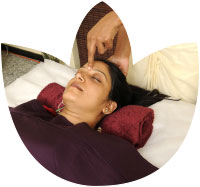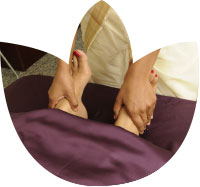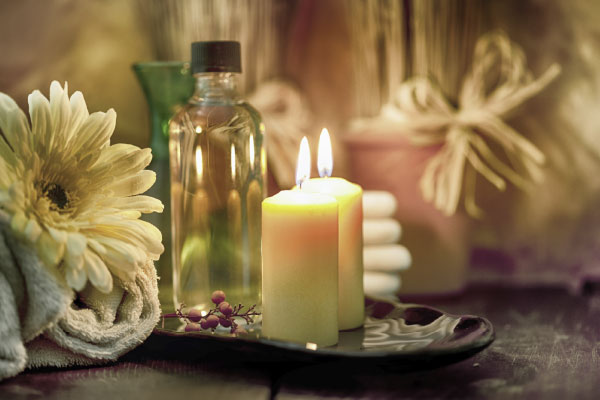In this synthetic world, where even medicine at times takes a commercial turn, these ancient Ayurvedic techniques are a refreshing change to achieving optimal health, finds Behnaz Sanjana.
A typical visit to the doctor starts with you listing out your symptoms head on: pain, uneasiness or feeling sick. A physical examination and a few questions later, there is a prescription, and you’re good to go.
 What if you were told that there are doctors who know what’s bothering you, without you telling them? No, they’re not magicians, but highly experienced and learned practitioners of the ancient science of Ayurveda who can figure out what’s awry just by feeling your pulse. The practice of diagnosing a patient’s ailments by studying their pulse is called Nadi Pareeksha – literally translating to ‘pulse test’.
What if you were told that there are doctors who know what’s bothering you, without you telling them? No, they’re not magicians, but highly experienced and learned practitioners of the ancient science of Ayurveda who can figure out what’s awry just by feeling your pulse. The practice of diagnosing a patient’s ailments by studying their pulse is called Nadi Pareeksha – literally translating to ‘pulse test’.
Dr Abhishek Kumar, medical officer in charge at the Sri Sri Ayurveda Clinic in Muscat is an expert at Nadi Pareeksha and regularly consults in Bahrain. He says: “Nadi Pareeksha can accurately diagnose both mental and physical imbalances, thus reaching the root causes of disease, and not merely addressing the symptoms. Generally, radial pulse is examined, just below the base of the thumb on the wrist.”
He goes on to explain that Nadi Pareeksha helps to determine a person’s dominant doshas; the basic physical energies that are the primary and essential factors of the human body that govern our entire physical structure and function. Every physical characteristic, mental capacity and the emotional tendency is down to your doshas – Vatta, Pitta and Kapha. The predisposition of a human being can therefore be explained in terms of the three doshas. An imbalance in the doshas leads to physical or mental ailments.
The balance of the doshas in the body determines one’s Prakruti, that is one’s constitution, or body type. Dr Abhishek describes Prakruti as our unique nature or the bio-type of the body. “It is our natural constitution – the qualities we were born with. The predominance of the five elements – space, air, fire, water and earth – and the three doshas (Vata, Pitta, Kapha) at the time of conception, and during the time the mother carries the child in her womb then decides the natural constitution of that individual. Prakruti is formed from the subtle qualities of the five elements. Once this proportion is set, generally, it remains permanent throughout life.”
Commenting on the purpose of Nadi Pareeksha, he says: “Knowing your own Prakruti gives a precise insight into what is good and bad for your body, so one can avoid imbalances by adopting an appropriate diet and suitable lifestyle.”
 Along with one’s Prakruti, Nadi Pareeksha can also assess the extent of Vikruti – the imbalance in one’s current constitution as against the original constitution one was born with. Detecting Vikruti is a forewarning of potential health risks, thereby nipping ailments in the bud.
Along with one’s Prakruti, Nadi Pareeksha can also assess the extent of Vikruti – the imbalance in one’s current constitution as against the original constitution one was born with. Detecting Vikruti is a forewarning of potential health risks, thereby nipping ailments in the bud.
An effective Nadi Pareeksha session requires that the patient does not eat or drink for three hours beforehand. Our expert recommends that the best time for Nadi Pareeksha is early in the morning, on an empty stomach. Once a trained practitioner checks and observes the pulse, he will discuss his observation with the patient and offer guidance on the diet and lifestyle changes required as per the inferred imbalance of the doshas. Herbal medicines and treatment may be needed to correct the doshas and further investigation may be prescribed to confirm the diagnosis, if required.
But if you have no obvious health concerns, is Nadi Pareeksha worth your time? “Healthy individuals should get an assessment to be aware of their Prakruti. Also, any minor imbalance in the body can be corrected before it manifests as a disease,” answers Dr Abhishek.
Another Ayurvedic technique he endorses for optimal wellbeing is Marma Chikitsa.
He explains: “In Ayurveda, Marmasthan or Marma means a special point through which Prana – the vital life force or energy – flows in the body. This is an ancient science dealing with body energies. Ayurvedic Marma therapists are aware of the energy chakras and all energy points which can be treated to unblock the channels of energies. This treatment involves gently touching the vital points of the body.”
Marma is a Sanskrit word meaning hidden, or secret. By definition, a Marma point is a juncture on the body where two or more types of tissue meet, such as muscles, veins, ligaments, bones or joints. Yet, Marma points are much more than a casual connection of tissue and fluids; they are intersections of the vital life force and Prana, or breath.
Marma therapy, which originated in South India, has influenced the development of Chinese acupuncture and even Kung Fu. In ancient times, warriors understood subtle energy and they used their knowledge to disable or kill an opponent. Some Marma points, when attacked, simply hurt. Others, when injured, become life-threatening. In the way warriors had knowledge of these points for the purposes of defending a kingdom, it was the job of the physicians to use these same points to heal.
“It has been identified that the human body has 107 Marma points. Gentle touch or light massage on these points balances the flow of Prana and gives total relaxation, relieving oneself of all stress,” says Dr Abhishek.
One session of Marma lasts for 45-50 minutes and this treatment is very effective in reducing blood pressure, anxiety, neurosis, sleeplessness and migraine. The best part about it, is that there is no oil used and neither is there is a need to undress for a Marma session. That’s good news for those of us who are squeamish about traditional oil massages.





































